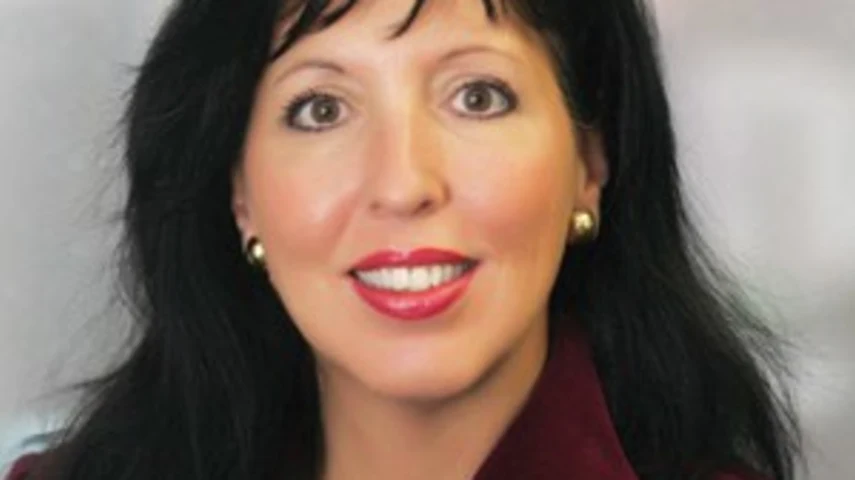Financial services recruitment - if not now, when?



After a substantial part of the year when employers and employees seem to have been marking time in terms of job recruitment, things may be about to change, write Andrew Tsanadis and Kate Cowling – but several key factors will come into play.
The last few months have certainly been a quiet time for recruitment in the financial services space.
With consolidation continuing and the uncertainties that continue to surround a newly–elected Federal Government, professionals have had to contend with an industry holding off on their business plans.
Largely, this has involved making strategic hires in the face of increased competition, complying with an in–swing regulatory regime and maintaining salaries and bonuses.
In filtering out potential candidates, education standards have remained high since Money Management last looked into recruitment, with an increasing number of employers asking for Certified Financial Planner (CFP) designations as a minimum.
In what is becoming an issue for the industry, the need for candidates with specialist experience has never been higher, particularly in the areas of risk and compliance, as well as those candidates with strong technical skills.
Most troubling is the fact that apart from the major institutions, graduate training programs are fewer and further between.
Added to this mix, recruiters have found that candidates are often too impatient to take the time to build up their skills in entry–level and paraplanning roles before jumping into the front–line advice deep–end.
Money matters
Base pay hasn’t changed much since March, although premiums are still being paid to those professionals with the right skills and experience.
According to Hays Banking’s latest salary guide, a qualified financial planner in Sydney takes home an average annual income of around $80,000, while a senior paraplanner commands anywhere between $75,000 and $90,000.
{^image|(width)600|(height)153|(mouseoverheight)245|(url)http://media.cirrusmedia.com.au/Money_Media_Library/Print Images/130926/p17-t1-MM2609_017.jpg"" src="http://media.cirrusmedia.com.au/Money_Media_Library/FS_Head_Shots/M_Web…" style="float: right; margin: auto 5px;" />On the planning side, the continual build out of retail wealth divisions and the level of competition in the market has also seen an ongoing drive for planners with proven sales and strong interpersonal skills, Hays director Jane McNeill said.
In addition, advisers with a background in self–managed superannuation funds (SMSFs) represent a growing area of need in the boutique–side environment.
“It takes more than the technical skills to get people over the line,” McNeill said.
Roger Walters’ manager, banking and finance, Daniel Connors agreed that there has been a push for client services candidates as they are perceived as an extension of the products provided to customers.
According to Profusion Group’s Orr, minimum educational standards for planner qualifications have remained steady, with an ever–increasing number of employers wanting Certified Financial Planner (CFP) qualifications and an Advanced Diploma of Financial Planning.
Despite the Tony Abbott–led Federal Government promising changes to some parts of the current Future of Financial Advice (FOFA) arrangements, good auditors required for project–based work are still high on the wish list for banks and boutiques alike.
Orr added that compliance salaries are benefitting the most – a result of this skills shortage amidst the ongoing implementation of regulatory safeguards.
In sales, Beck said she expects most companies will be able to cope with expected moves within their distribution teams because most of them have had their own internal talent pools to develop business development managers.

Are employees getting itchy feet?
Connors said there has been little change in the trend of financial services professionals such as planners, paraplanners and underwriters cutting their teeth in small boutique providers and then eventually heading to the relative stability of an institution to continue their professional careers.
In a recent survey of 3,211 financial professionals, Profusion Group found that over half (54 per cent) were actively seeking new opportunities while another 37.7 per cent said they were open to other opportunities.

A staggering 77.7 per cent said they would move out of the banking and finance industry altogether.

Lack of career opportunities (45.6 per cent), lack of challenging work (26 per cent) and inadequate remuneration (23.4 per cent) were the main factors motivating people to depart their current jobs in favour of greener pastures.

With experienced professionals returning to Australian shores, domestic banks were seen as preferred employers when compared to international brands.
Profusion Group chief executive Rod Jones said the findings are largely the result of international investment banks reducing employee numbers due to a reduction in capital and increased consolidation since the global financial crisis.
The major four banks were found to be the employers of choice, with banking and financial services employees preferring domestic banks as employers (70 per cent) versus international banks (40 per cent).
In other findings, Profusion found that the gap in remuneration between international investment banks and domestic banks has closed significantly.
This came down largely to the availability of career opportunities, discounts on financial products and competitive salaries and financial benefits.
Orr said the current financial services environment is not playing to a commission structure anymore and the need for advisers who have clients’ best interest at heart has never been stronger.
The fee–for–service structure is stamping out the “cowboys” in the industry and driving the right kind of behaviour, she said.
Despite this, there is still tremendous eagerness from some advisers who want to get through to front–line advice roles as quickly as possible.
Orr said there needs to be some sort of cultural change in the industry where young professionals stick it out for a bit longer in scaled advice and paraplanning roles in order to bolster their technical abilities.

Getting the balance right
According to Hays, there is an increased focus on gender diversity at the senior and professional level, particularly within the larger banks as they work towards improving the diversity demographics of their work force.
Orr said women have been heavily targeted by institutions but more work needs to be done in the industry as a whole.
Although McNeill agrees that while there is certainly a lack of women in senior roles, she suspects that it is not necessarily due to organisations being reluctant to hire them. Rather, it comes down to a lack of available candidates in the marketplace.
“At the end of the day, organisations will go for the best candidates for the job, regardless of age or gender.”
A rethink of graduate programs that targets women at entry–level and promotes them all the way through the business is another solution to gender imbalance, she added.
Beck – who is also a founder of Financial Executive Women – has for many years argued that companies trying to meet gender balance quotas are not a positive way to build female numbers in senior management positions.
As with all industries, promotions should be based on merit, she said.
In saying that, Beck said more women are becoming interested in the areas of planning and accounting and at graduate level the gender balance is fairly equal.
So–called ageism in the industry was not flagged as a major concern for most recruiters and Coates said financial planning was becoming more popular as a profession.
Chasing the big money
Despite remnants of the post–GFC salary backlash, base salaries for senior bank executives have remained relatively stable in the last 24 months.
However, trends have seen short–term bonuses fall, often redirected into long–term, achievement–based incentive schemes.
In 2011, the average bonus for ASX top 100 CEOs fell from $1.584 million in 2010 to $1.255 million, a study from the Australian Council of Superannuation Investors (ACSI) has shown.
“In the current market conditions, it is clear that boards have been listening to investor views on bonuses in light of company returns,” ACSI CEO Ann Byrne said of the findings.
“ACSI has seen this level of dialogue and engagement increase with the advent of the ‘two strikes’ rule on executive pay.”
Regardless of the material fall in bonuses, the vast majority of CEOs – almost 90 per cent – still received an incentive, according to the research.
From the big four banks, the sharpest salary plus bonus tumble last year was seen at the Commonwealth Bank, with the exodus of notoriously well–paid CEO Ralph Norris. Incoming CEO Ian Narev took a base package of $2,845,000 in 2012, next to Norris’ $4,758,000.

As groups like the Financial Services Council throw their weight behind clawback provisions, the rest of the industry has made slow progress on aligning packages with performance.
A recent Deloitte study showed 41 per cent of 86 surveyed companies moved towards clawback provisions, up from 26 per cent in 2010.
Fifty–five per cent of large institutions applied the provisions to their senior executives’ packages, the study showed.
But while firms acknowledge incentive compensation plans could prompt risk–taking behaviours from senior executives, less than half (49 per cent) said they made concerted efforts to align risks with rewards.
Greener pastures ahead
In an industry that has been rocked by significant regulatory change, competition will continue to remain a deciding factor for business decisions going forward.
For employers, the need to be smarter in the recruitment game has never been higher. For candidates, there is a lot more opportunity out in the market than there was a year ago.
Professionals who had previously stayed put due to market concerns are now moving on to organisations that feed their desire for career progression, challenging work and high salaries.
Of course, simply getting noticed in today’s environment will require meeting current education standards and upskilling to meet the pockets of industry demand.
McNeill said the recent change in Government might help to further boost business confidence and increase hiring across the banking sector as institutions and boutiques emerge from the holding pattern that has stricken the industry leading up the federal election.
“We may not see it immediately, but hopefully by the end of the quarter I would expect the more proactive organisations to be looking to the year ahead,” she said.
“I would hope the change in Government would reduce the compliance costs for small business and, on that basis, hopefully we’ll see more investment in employment and training.”
Recommended for you
In this episode of Relative Return Insider, host Keith Ford and AMP chief economist Shane Oliver unpack the latest unemployment numbers and what they mean for a rate cut, as well as how the latest flare-up in the ongoing US–China trade dispute has highlighted the remaining disparity between gold and bitcoin.
In this episode of Relative Return Insider, host Keith Ford and AMP chief economist Shane Oliver take a look at the unfolding impacts and potential economic ramifications of the US government shutdown and the surge in gold and bitcoin prices.
In the latest episode of Relative Return Insider, host Keith Ford and AMP chief economist, Dr Shane Oliver, discuss this week’s RBA interest rate decision, a potential government shutdown in the US, and a new property scheme aimed at first home buyers.
In the latest episode of Relative Return Insider, host Keith Ford and AMP chief economist Shane Oliver discuss the latest Australian CPI data and their impact on future interest rate decisions. If the RBA opts to cut rates again, how will this affect investor and consumer behaviour?





